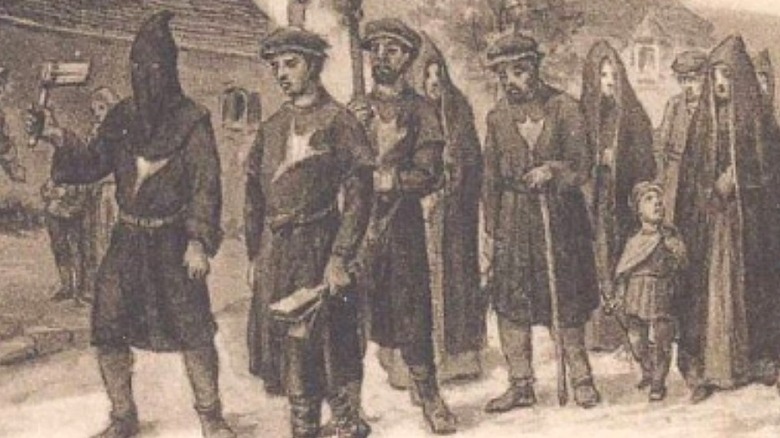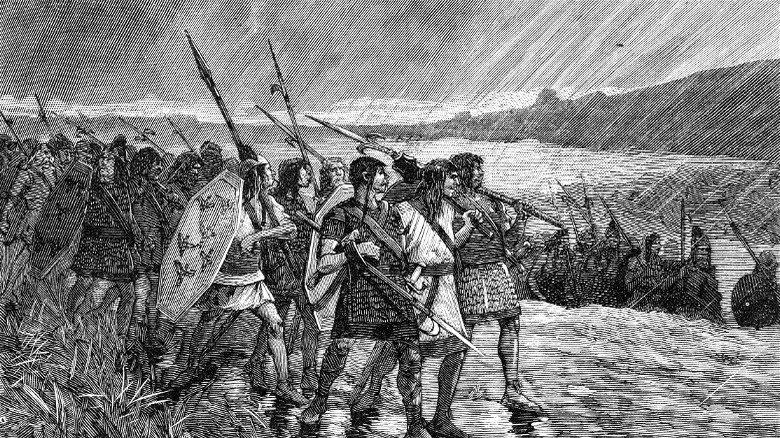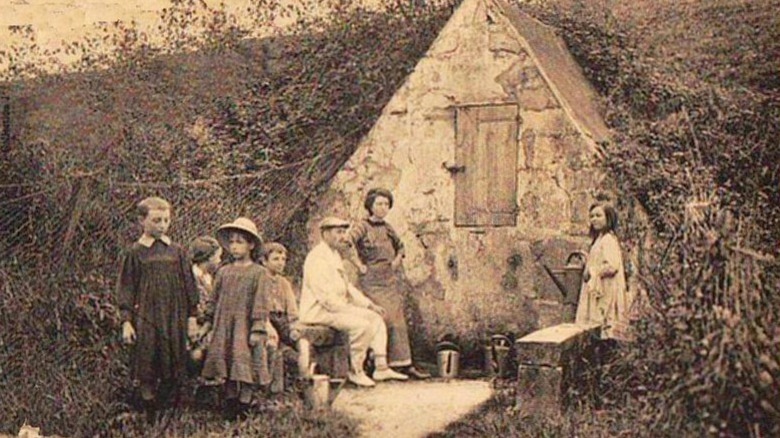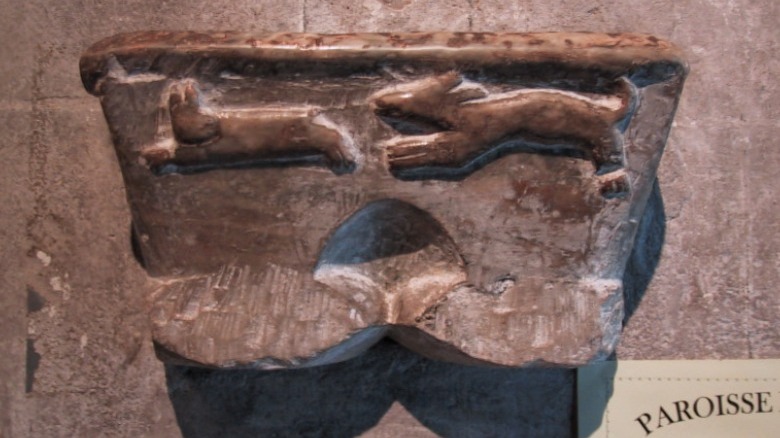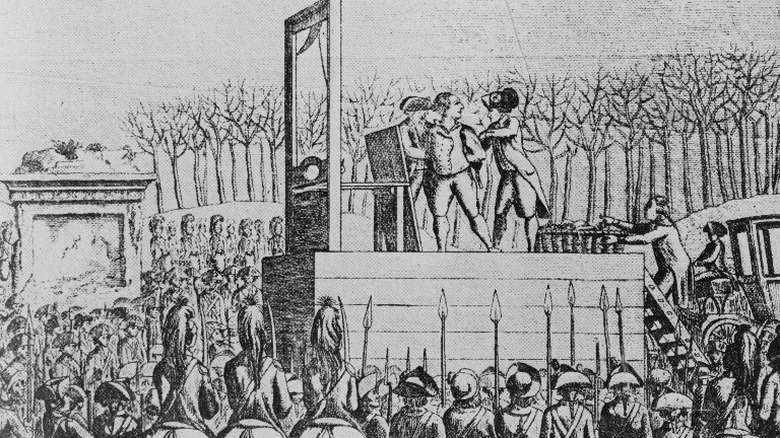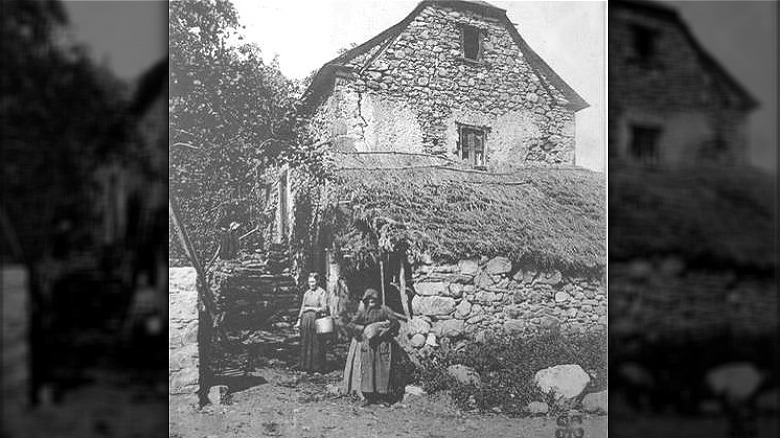The Forgotten History Of France's Untouchables
The structure of human civilizations have long been set up in a fashion that divides people. Whether based on physical attributes, religious ideologies, or social status, communities have separated people into different groups for thousands of years. While division in some societies is less severe than others, there are also many where segregation is taken to a level that some would consider extreme. An example of this is commonly known as the caste system.
Similar systems have been set up in various places and in many time periods across history. Regardless of where and when they were set up, these societal structures generally have one thing in common: There are those people who ended up on the very top of society, and those who ended up on the very bottom. Those at the bottom of these communities were often treated horribly, and in some cases classified as "untouchables." In France, one of these groups of people were known as the Cagots (per a 2011 report by the Independent), and their story has been mostly forgotten until recently.
Potential origins
According to the Independent, the Cagots' origins are uncertain. They first appear in documents around the 13th century, and even then it was clear that they were looked down upon in their society. Though they were believed to be native to the western part of France, specifically the Pyrenees Mountains, there are many different theories as to how they ended up there.
One of the more popular ideas is that they are descended from Moorish soldiers from Spain, who ended up in France (per Listverse). If they were in fact the descendants of Muslim soldiers in a Christian country, it might help explain why they were hated so much. In addition to this theory, there are also those who speculate that the Cagots were descended from the Visigoths, perhaps best known (and reviled) for their participation in the sack of Rome. Still other theories about the origins of the Cagots focus on religious ties to a group known as the Cathars, or their ties to guilds during Medieval times.
Physical differences
The origins of the Cagot people is obviously rife with speculation and assumptions. Unfortunately, the same is true when it comes to the physical characteristics that they had. The Cagots reportedly differed from most of their European counterparts in their appearance. There are sources that describe them as "short, dark, and stocky," and having "frizzy brown hair," per the Independent.
In addition to these basic physical differences, there have been many other stereotypes associated with this group of people. According to Listverse, the Cagots have been regarded as "diseased," and reportedly had uniquely shaped heads, missing earlobes, and even webbed feet. Even more outlandish and fantastical rumors claimed that they had green blood and skin so terrible that it ruined anything they touched. While it is possible that they may have had some sort of unique physical traits, these could be due to inbreeding, as a result of the practice of endogamy — only allowed to marry those from within their own community — that was forced upon them. As they were often seen as "dirty" or "untouchable," it is possible this provided the basis for the discrimination and segregation that the Cagots suffered.
Discrimination and separation
The Cagots were separated from their French counterparts in many different ways. It appears that not only were they relegated to the status of peasant, they were divided in other ways. They were put into what the Independent describes as "dismal ghettos," where they were kept apart from the rest of society.
In addition to their homes being separated, they were also separated in the general tasks of everyday life. They were prohibited from practicing certain professions and were relegated to physical labor, such as carpentry and basket weaving. They were even segregated when attempting to practice their faith in churches — having to use their own entrances, fountains, and were given communion at a distance. However, that wasn't even enough, and the French placed even more outlandish and outright bizarre restrictions on an already oppressed people.
The Cagots were forbidden from touching many things, especially things shared in the community, including bridge parapets or baths. They were not allowed to eat alongside non-Cagots, for fear of contamination. They were also prohibited from walking around barefoot, for some reason. This may have led to the rumors that they possessed webbed feet. The symbol of the webbed foot was also used to identify the Cagot people, as they were forced to wear it pinned to their clothing.
The French Revolution changed some things
The Cagots endured this type of treatment for centuries, being ostracized and abused by the rest of their communities. It was not until the 17th century that the French government began to make changes in regard to its anti-Cagot policies (per Listverse). Slowly but surely, laws were repealed, and in some places, it became illegal for anyone to persecute a Cagot.
While progress was being made, it was not until the French Revolution in 1789 (per History) that the last of the restrictions on the Cagot people were removed. Unfortunately, just because all of the laws that had allowed for this persecution were abolished, it didn't mean that the prejudice against them was also removed. In some places there were still separate neighborhoods and cemeteries designated only for Cagots as late as the 19th century. Even into the 20th century, people were made fun of or teased if they were believed to be of Cagot descent.
Remaining Cagots
So what has been the ultimate fate of the Cagots? It appears that for the most part, they have unfortunately somewhat disappeared from the historical record. However, in recent years, the story of a woman named Marie-Pierre Manet-Beauzac has come to light. According to the Independent, while she was researching her family history, she came to the realization that she is, in fact, a Cagot.
In 2011, Marie-Pierre Manet-Beauzac lived in a commune in the Pyrenees Mountains, where her people have had roots going back centuries. She believes the fact that there are so many questions around her heritage is really no accident. It's possible that evidence of the Cagot people and their treatment may have been purposely illuminated from history. According to her, it's still a bad thing to talk about the Cagots, and that there is a lot of shame surrounding the issue.
Though some have tried to erase the legacy of this group of people, it appears they have not succeeded. The Cagot bloodline still lives on.
